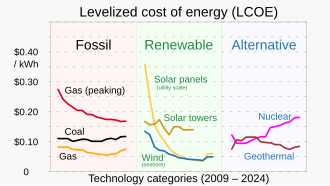What Are the Differences Between Potential and Kinetic Energy?

Why are Specific Variations important?
The foremost distinction between potential and kinetic electricity is that one is the energy of what can be and one is the electricity of what is. In different phrases, potential electricity is stationary, with stored power to be released; kinetic energy is power in movement, actively the usage of power for movement. Another essential difference is the velocity Tara Energy . This size is the basis of kinetic electricity, yet has nothing to do with the capability of electricity. In truth, velocity is the maximum vital part of the equation while determining the quantity of kinetic electricity for any given object, and it’s far nonexistent in the potential strength equation.
What Is the Relationship Between Potential and Kinetic Energy?
Although those primary varieties of energy are very specific, they may be complementary to one another. Potential strength usually ends in kinetic energy while it’s far launched, and kinetic electricity is needed to permit an object to save strength as ability, in a single way or some other. For instance, a rock on the edge of a cliff does not at once want kinetic strength to save the capacity energy to send it down the eroding cliff face. But the act of abrasion to get the rock to the edge calls for kinetic strength. Therefore, the rock calls for it for its capability strength.
Given that these are the two essential forms of electricity within the global, mainly at the human scale, there’s a consistent push and pull between potential power and kinetic power in ordinary life.

What Are Examples of Potential and Kinetic Energy?
Although the definition of both ability and kinetic electricity may additionally seem quite simple, it’s still no longer usually easy to tell which shape of power is present for sure gadgets or strategies. Planets The movement of planets across the sun and other stars within the galaxy is kinetic power at work. As they may be drawn toward the massive objects in the center in their respective orbits, due to the robust gravitational pull, they fall toward the center of the mass. This results in an orbiting movement — and all movement is a form of kinetic strength.
What do Rubber Bands do?
Rubber bands can be classified as both capability and kinetic power, relying on the state of the band. When elastic is stretched, it’s loaded with capability energy; while released there’s a shift to kinetic power. This is especially authentic if the elastic is transporting some other object, consisting of a rock being flung from a slingshot. Rivers are strictly kinetic strength in paintings. The water is constantly transferring, and all that motion is continuously growing kinetic electricity. The best time a river could have capability energy is if it’s miles dammed, with the artificial reservoir storing electricity to be used whilst wished along a hydroelectric dam. There are unique versions of strength within each kinetic and ability electricity classification. While some versions, consisting of the ability energy stored in batteries, are with no trouble apparent, others aren’t as clean to perceive. Electrons are in motion so that they include kinetic electricity. This is one of the excellent examples of a nonphysical item wearing kinetic strength. However, it’s nevertheless viable to determine the capability of electricity that an electron has saved. To discover this ability power calls for complex components. The general power is the sum of the electron’s kinetic electricity and its capacity strength, that’s represented through an excellent more complicated formulation. Batteries are a shape of chemical power, with strength saved inside the bonds of molecules contained inside the battery acid at their center. The key word here is “stored” which means batteries are a form of capacity power, that is how all chemical energy is classed. Biofuels and fossil fuels are different examples of stored chemical energy.



